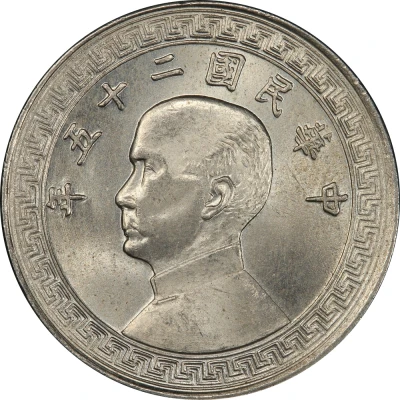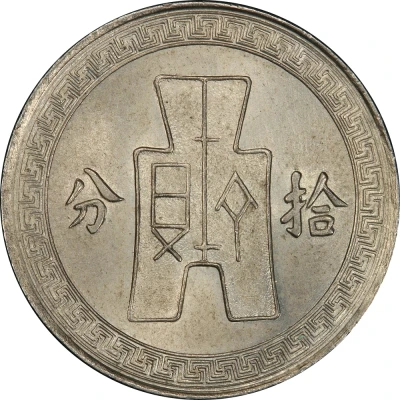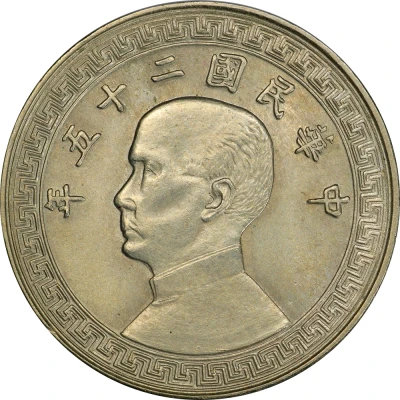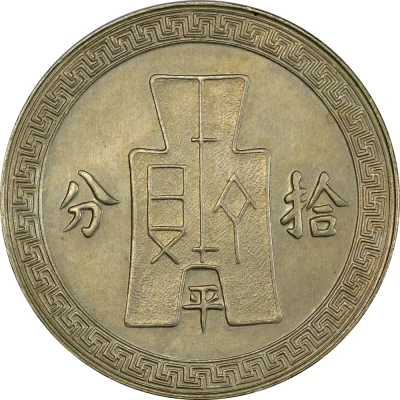


© PCGS
10 Fen Non-magnetic
25 (1936) year| Nickel (alloy) | 4.50 g | 21 mm |
| Issuer | Republic of China |
|---|---|
| Period | Republic (1912-1949) |
| Type | Standard circulation coin |
| Year | 25 (1936) |
| Calendar | Chinese republican |
| Value | 10 Fen (0.10) |
| Currency | Yuan (1912-1948) |
| Composition | Nickel (alloy) |
| Weight | 4.50 g |
| Diameter | 21 mm |
| Shape | Round |
| Technique | Milled |
| Demonetized | Yes |
| Updated | 2024-10-04 |
| Numista | N#240792 |
|---|---|
| Rarity index | 82% |
Reverse
Ancient Chinese spade money with one Chinese ideogram on either side and surrounded by a decorative border.
Script: Chinese
Lettering:
分拾
貝齊
Translation:
10 Fen
Qi Bei
Edge
Plain
Comment
The spade represented is an issue of the State of Han issue during the Warring States period, cast circa 350-250 BC.All Year 25 coins were supposed to be minted at the Shanghai Mint in pure nickel (and so were supposed to be magnetic). However, that year, a warlord had the Tientsin Mint produce these coins out of a nickel alloy, and because it was an alloy of nickel, those examples ended up being non-magnetic.
Interesting fact
The 10 Fen coin from Republic of China (1936) was designed by the famous Chinese artist, Xu Beihong. He was a renowned painter and calligrapher who was known for his work in the traditional Chinese style. The design of the coin features a stylized orchid, which is a symbol of elegance and refinement in Chinese culture. The orchid design was chosen to represent the country's rich cultural heritage and to promote the value of elegance and refinement in everyday life.

